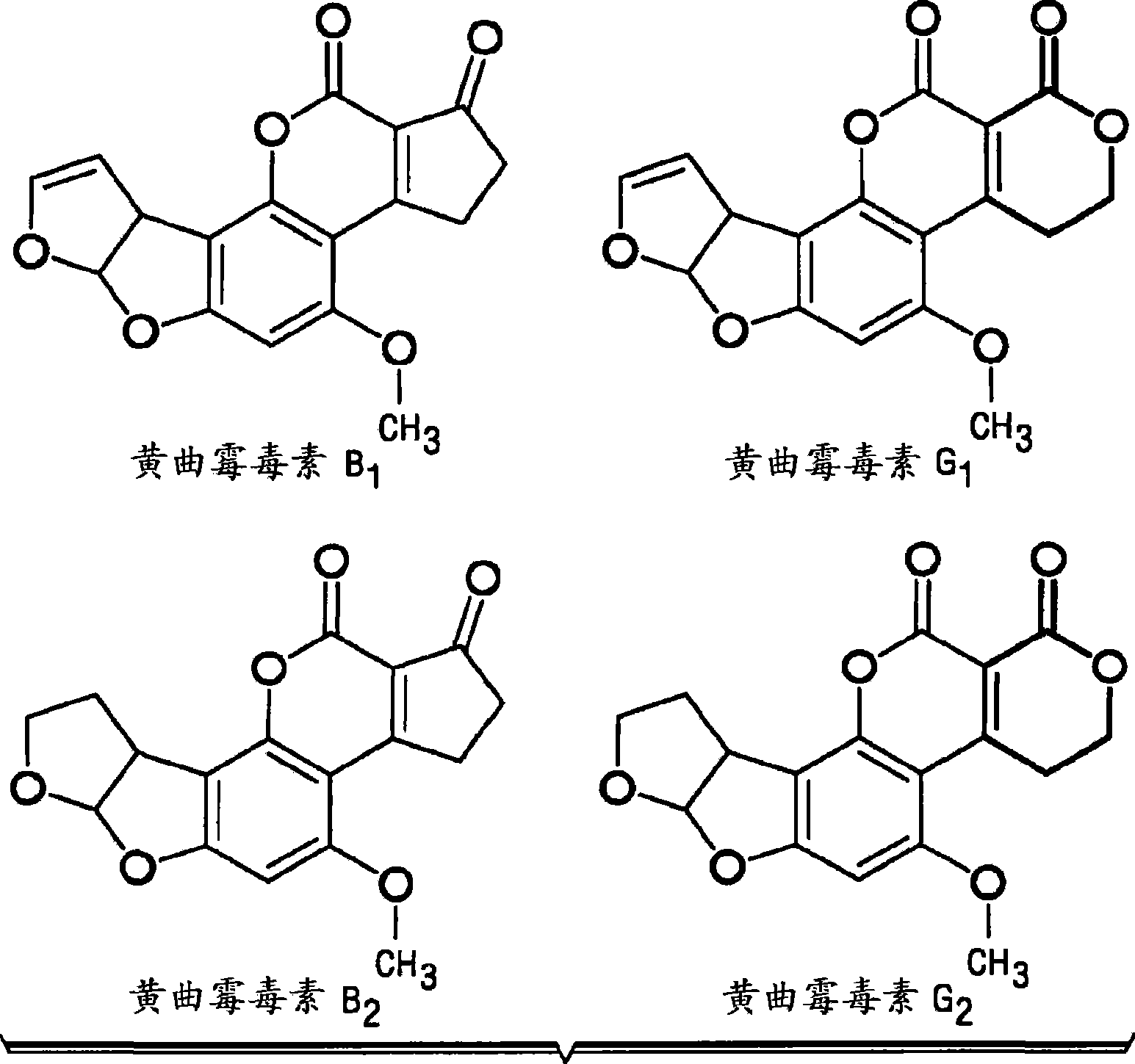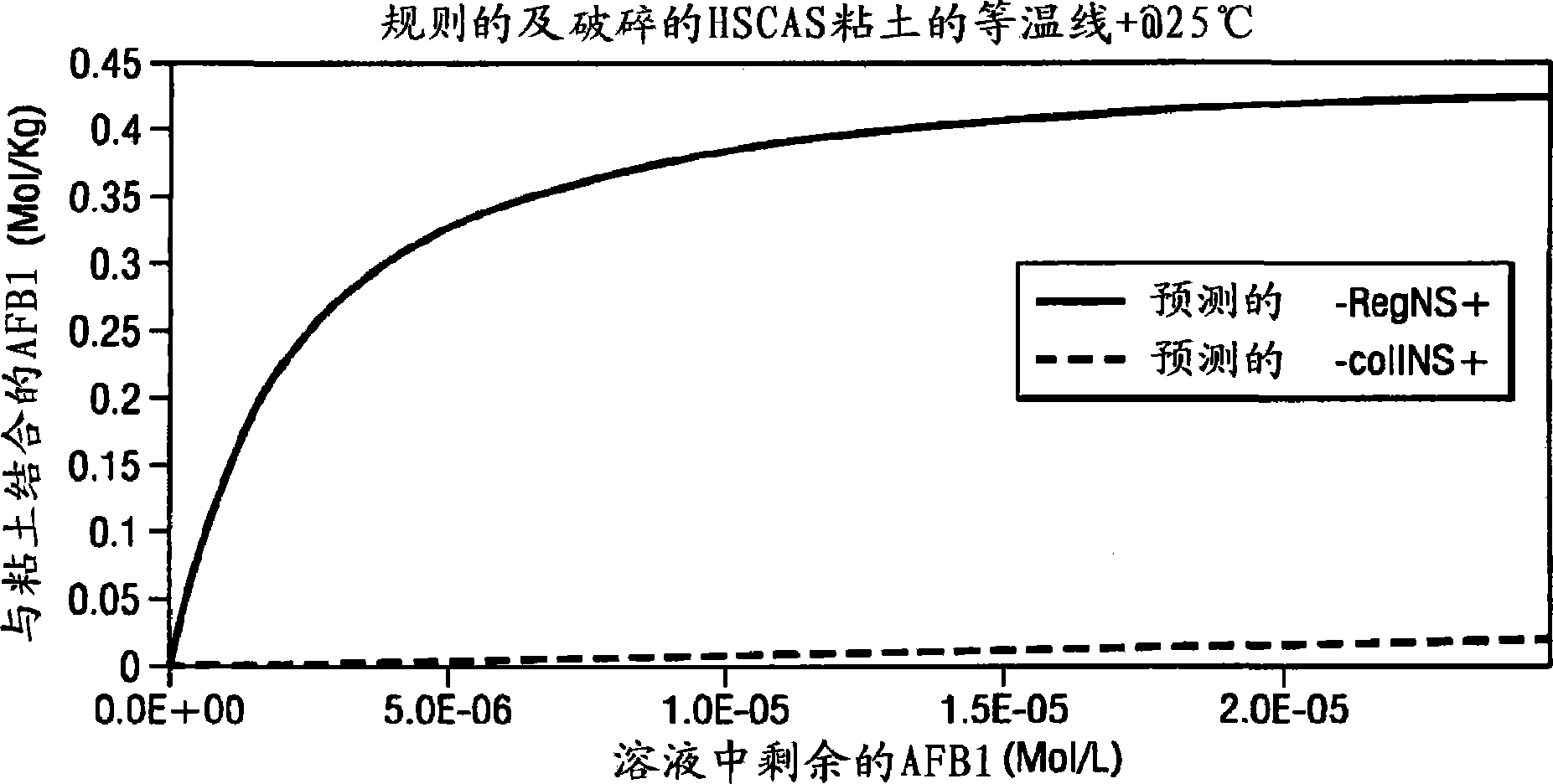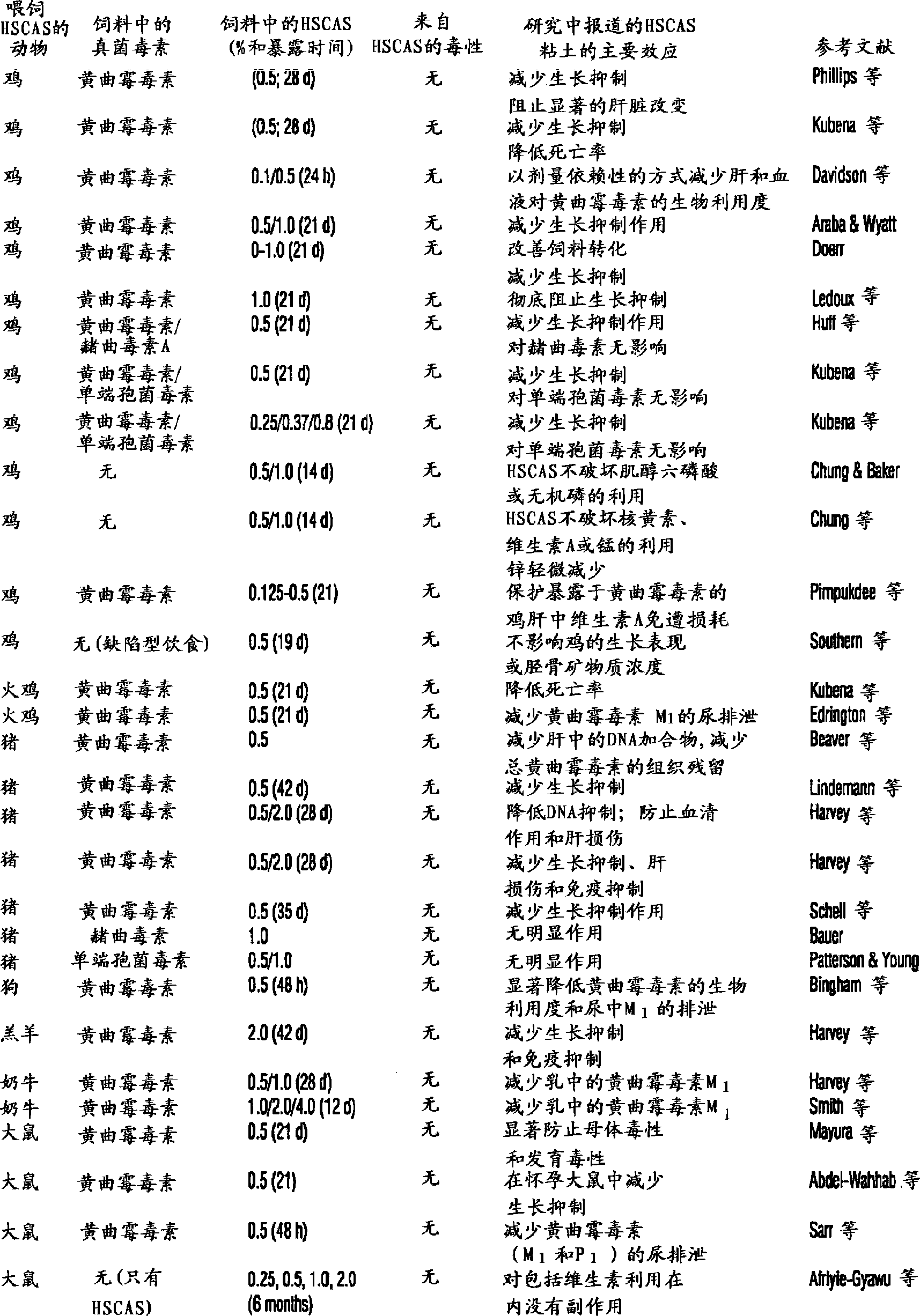Composition and methods for the enterosorption and management of toxins
A technology of calcium aluminosilicate and composition, which is applied in the direction of drug combination, active ingredients of aluminum/calcium/magnesium, anti-toxic agent, etc.
- Summary
- Abstract
- Description
- Claims
- Application Information
AI Technical Summary
Problems solved by technology
Method used
Image
Examples
Embodiment 1
[0069] Several strategies are available for dealing with aflatoxins in agricultural products, the simplest of which require isolation and destruction of the source of contamination. However, this approach is often not practical because alternative food supplies may not be available, or alternative supplies may not be economically viable. One of the most promising and well-studied approaches for the prevention of aflatoxin poisoning in livestock involves the incorporation of clay or various "binders" into diets contaminated with these toxins. The additives reduce the bioavailability of the toxin in the gastrointestinal tract; that is, they act as sequestrants (gutabsorbents) for the toxin, thus reducing absorption and distribution in the blood and target organs.
[0070] Adsorbed clay minerals have been reported to be associated with aflatoxin B in liquid 1 combined. In the first enteric adsorbent study on aflatoxin, calcium montmorillonite clay, commonly used as an anti-caki...
Embodiment 2
[0110] Primary hepatocellular carcinoma (HCC) has a unique geographic, sex, and age distribution that may be determined by specific causative factors (ie, hepatitis and aflatoxin exposure). The incidence of HCC varies considerably according to geographic location. The distribution of HCC also varies among different ethnic groups in the same country and in different regions of the same country.
[0111] Areas of high incidence (more than 15 cases per 100,000 people per year) include sub-Saharan Africa, China, Hong Kong, and Taiwan. More than 40% of all HCC cases occur in China, where 137,000 cases occur annually. In contrast, North America, South America, most of Europe, Australia, and parts of the Middle East have a very low incidence, reporting fewer than 3 cases per 100,000 people per year. However, the incidence in the United States has increased over the past 20 years, likely due to many people with long-term chronic hepatitis C.
[0112] Men are more susceptible to HCC...
Embodiment 3
[0121] Aflatoxins (AF) are harmful by-products of mold growth, mainly produced by the fungi A. flavus and A. parasitica. Naturally occurring AF (such as B 1 , B 2 , G 1 and G 2 ) have been listed as dangerous pollutants present alone or in combination in a variety of foods consumed by humans and animals. Aflatoxin B 1 (AFB 1 ) have been characterized as genotoxic, immunotoxic and hepatocarcinogenic. Humans and animals with acute aflatoxin poisoning usually have symptoms based on dose including jaundice, low-grade fever, gastrointestinal bleeding, edema, depression, anorexia, diarrhea, fatty liver, ascites, abdominal pain and possibly liver failure and death. Previous reports have revealed strong dose-response relationships between exposure to AF and growth impairment, particularly developmental impairment (reflecting chronic malnutrition) and underweight (marking acute malnutrition), as in Benin, Togo, and West Africa. seen in children.
[0122] One of the most severe ...
PUM
| Property | Measurement | Unit |
|---|---|---|
| The average particle size | aaaaa | aaaaa |
Abstract
Description
Claims
Application Information
 Login to View More
Login to View More - R&D
- Intellectual Property
- Life Sciences
- Materials
- Tech Scout
- Unparalleled Data Quality
- Higher Quality Content
- 60% Fewer Hallucinations
Browse by: Latest US Patents, China's latest patents, Technical Efficacy Thesaurus, Application Domain, Technology Topic, Popular Technical Reports.
© 2025 PatSnap. All rights reserved.Legal|Privacy policy|Modern Slavery Act Transparency Statement|Sitemap|About US| Contact US: help@patsnap.com



